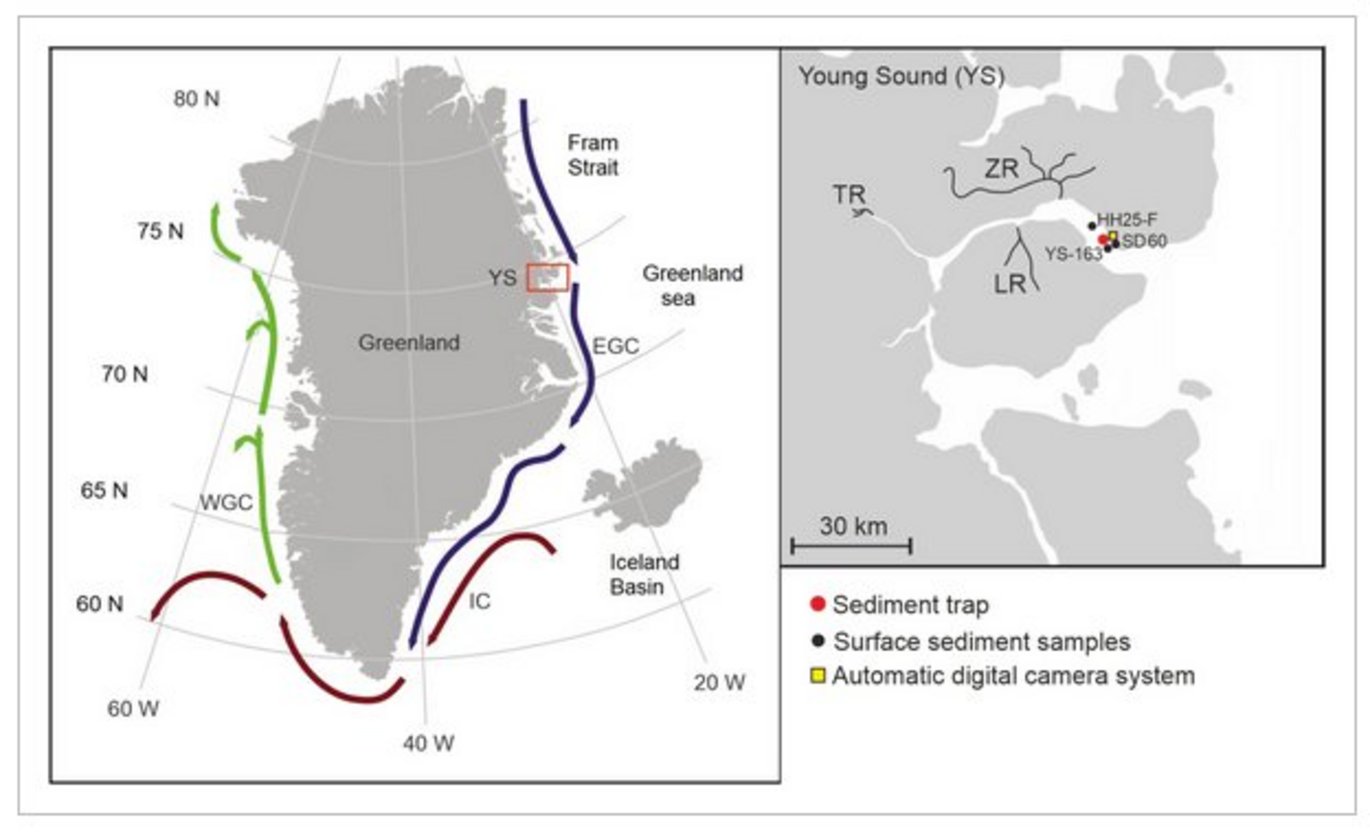Diatom and Dinoflagellate Cyst Fluxes Over Four Annual Cycles in a High Arctic Fjord, Northeast Greenland
New publication by M. Mäkelä, T. Luostarinen, S. Ribeiro, K. Weckström, M. Sejr, M. Winding, M. Heikkilä

Abstract:
Retreating sea ice and freshening surface waters are rapidly changing Arctic coastal environments. To predict the impacts of cryosphere change, it is essential to understand ecosystem variability beyond the instrumental era. Diatoms and dinoflagellate resting cysts have been abundantly used to reconstruct past marine conditions. Our understanding of microfossil species' ecologies is predominantly based on ecophysiological studies, the spatial distribution of species in surface sediments in relation to surface-ocean conditions and sediment-core studies. However, little is known about their seasonal ecologies and how biotic interactions impact species abundances. Here, we present sediment trap records of diatom and dinocyst succession over 4 years in a seasonally ice-covered Northeast Greenland fjord. We found highly seasonal diatom blooms and dinocyst production, but no clear separation in the timing between sea-ice indicating and open-water species fluxes. The interannual variation was not linked with the timing of sea-ice breakup. Instead, we linked higher production of heterotrophic dinocysts with high river discharge, while the highest diatom fluxes were often recorded during relatively low river discharge, suggesting that land-derived meltwaters controlled the blooms through stratification and light limitation. Thus, while we were not able to detect detailed species-environment dynamics due to the resolution of the trap data, our results indicate that the limitation of light and nutrients due to river discharge may override the impacts of sea-surface temperature and sea-ice cycle. We highlight that land-derived inputs should be considered alongside other parameters of sea-surface conditions when using diatoms and dinocysts as paleoecological proxies in Arctic fjord settings.
